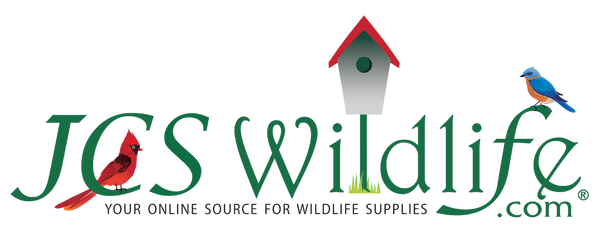Regardless of the size of your backyard, there’s nothing quite like having a bird feeder set up so you can enjoy feeding your feathered friends all year long. Watching birds of all different types visit your feeder can be both relaxing and enjoyable. By creating a natural wildlife habitat in your backyard or garden area, you are helping the planet, even if it’s in a very small way.

Of course, it’s notas easy assimply tossing some food outside and
hoping for the best! There are some dos and don’ts to bird feeder set up. By
having a method and plan, you can ensure harmony will be the outcome. Here are
some of the best dos and don’ts for feeding birds in your backyard.
DO Start with a Plan
If you are serious about creating the best natural habitat for the wildlife
that visits your backyard, then you will want to be sure to do your research.
Know what kind of birds are most likely to come to your yard and then set up
food and water accordingly. Do your research and plan food, water, and even
wildlife landscaping according to the types of birds as well as the time of
year.
DO Provide the Right Types of Food
Many people who set up bird feeders go for cheap stuff that they purchase in
the pet aisle of their local grocery store. While that may suffice, there isn’t
a one-size-fits-all type of food. If you want to truly create a healthy and
natural place for birds of all types to feed, then you’ll want to get organic
seeds and nuts. Purchase a mix that offers a
wide variety and healthy
nutritional balance
of grains and seeds like corn kernels,
buckwheat, peanuts in-shell, black oil sunflower seeds, alfalfa pellets, and
even fresh fruit.
DO Get a Sturdy Bird Feeder
Providing the birds with the best food won’t do them much good if the bird
feeder is falling apart. Ensure that they have a safe and sturdy place to eat
by providing them with a
durable, year-round bird
feeder
that will hold up to all types of weather.
DO Provide Water
Even in the winter birds need water, so be sure to fill your bird bath all year round – not just in the hottest months of the year.
DO Leave Natural Debris When Landscaping
While you don’t have to be the best landscaper in
town, planting foliage that is native to the area and will provide natural food
to birds and local wildlife, is a great idea. As a plus, bushes, hedges, and
ornamental grasses look fantastic, too! Birds and other creatures rely on trees
and natural debris to provide hiding places from weather and predators, so it’s
a good idea to leave some leaves, non-invasive weeds, and even a few fallen
sticks near the feeder to help them feel safe.
DON’T Give Birds and Wildlife Junk Food
Although this should go without out saying, you would be surprised how many
people give food with inadequate amounts of nutrition to wild animals. This can
lead to serious health problems and even death, especially for younger animals
who are still developing. Feeding the birds shouldn’t break the bank, but if
you are going to do it, you will definitely want to choose the healthiest
options for your feathered friends. Unfortunately, there is a deformity in foul,
particularly geese and ducks known as “angel wing.” This is said to be caused
by birds who have eaten too much protein or carbohydrate-based diets. Things
like crackers, white bread, and popcorn can lead to this issue.
DON’T Put Food on Vehicles
Again, this should go without saying, but you would be surprised at what people
do all while thinking they are taking care of wildlife. Even if a car is a
clunker and won’t be moved, it’s never a good idea to put food on a vehicle.
Damaged or broken windows, busted tires, and the like, do not make good
habitats for birds – or any other wildlife for that matter!
DON’T Put Bird Feeders Near Pet Hangouts
If you have an outdoor cat, chances are they have a particular place where they like to snooze. Whether it’s under a tree or somewhere cozy in the backyard, make sure your bird feeder is placed nowhere near the location your cat or other family pet likes to hang out. Keep your furry family members away from bird feeders and habitats so the birds feel safe and secure. While this may be easier said than done, you might want to try a fence or other form of backyard barrier to keep your pet from stalking the birds.
Providing
a backyard bird feeder is a wonderful way to give back to nature while enjoying
many hours of bird watching!



